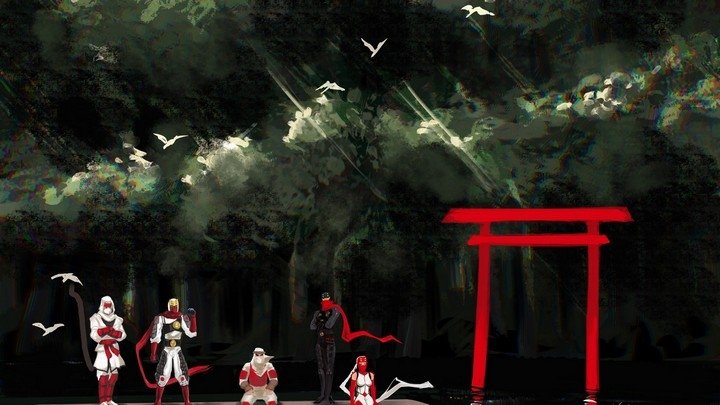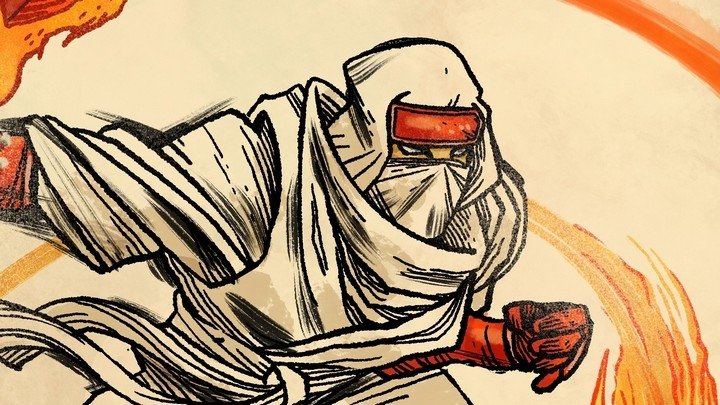How Puyo Puyo set the world on "faiyaaah"
Sega's release of Puyo Puyo Tetris late last month represents a triumphant return of the classic puzzle game to the West. Technically, the series' last appearance outside Japan only came a year ago, when the second game, Puyo Puyo Tsū, was released on 3DS as part of Sega 3D Classics Collection. And before that, the same game was also released on Wii Virtual Console in 2008. But both of these versions left the game in its original Japanese, so for the last properly localized Puyo Puyo product, you have to go all the way back to 2004's Puyo Pop Fever.
It's hard to believe it's been over a decade since a new entry in the series came west—so long that anyone but die-hard puzzle game addicts might need a primer to reacquaint themselves. The basic concept is simple enough: Pairs of differently colored slime blobs—the titular Puyo Puyos—drop one-by-one into a well, and you clear them out by linking them into matching groups of four or more. It differs from, say, Tetris in its potential for combos: If you have, say, two layers of blue Puyos separated by a layer of red Puyos, eliminating the red layer will automatically cause the top blue layer to fall onto the bottom one, turning a single move into a chain. This mechanic grows increasingly important as you realize its potential, and with careful planning, it's possible to set up daisy chains of combos that clear the entire well in one big chain reaction. Dropping that last piece into place and watching your designs come to fruition is as viscerally satisfying as tipping over a winding line of dominoes.
 Pictured: the humblest of beginnings.
Pictured: the humblest of beginnings.
Puyo Puyo's other trademark is its two-player competitive mode. This by itself was nothing new even when the game debuted in 1991, but "competition" in puzzle games usually boiled down to seeing who could keep their own well tidied up in isolation. In a stroke of brilliance, developer Compile took this basis and added the ability for players to "attack" one another by performing well. Clearing Puyos in combos causes a proportional number of "Garbage Puyos" to be dumped into your opponent's well, disrupting their own combos and burdening them with that much more to clear away. The potential for vicious beatings is as limitless as the combo mechanic itself.
Still, Puyo Puyo didn't make many waves in its initial appearance on MSX2 and the Famicom Disk System. The MSX was nearing the end of its relevance in '91, and the FDS version didn't even receive a retail release, coming packaged with copies of Family Computer Magazine. The game wouldn't find a wide audience until a year later, when arcade giant Sega took Compile under their wing to produce a coin-op version. The core gameplay turned out to be a perfect fit for the heart-pumping world of arcade games; the only major change was throwing out the traditionally solitary puzzle game experience to focus entirely on the competitive aspect. Even the single-player mode wouldn't let the player alone, instead pitting them against a series of zany computer-controlled opponents (drawn from Madō Monogatari, Compile's RPG series where the Puyo Puyo first debuted as the requisite slime enemy). While the characters don't have different abilities as in fighting games, they all have distinct AI patterns simulating the individuality of a human opponent.
The sequel, Puyo Puyo Tsū, put the finishing touch on the formula with the introduction of the "offset" rule, where players can nullify some or all of the Garbage Puyos coming their way by pulling off a combo right before they fall. With this, you can play not only aggressively but defensively, putting your long-term combo designs on hold to mitigate damage to yourself. This strategic depth, combined with the ability to overwhelm your opponent with snap decisions, distinguishes Puyo Puyo as a frantic tug-of-war with a cerebral bent, where the victory goes to the one who both outwits and outpaces their rival.
From here, Puyo Puyo grew into a major phenomenon with nationwide tournaments, countless sequels and spin-offs, and even its own line of Puyo-shaped sweets—at least in its native Japan. The whole thing was evidently considered just too darn cute to come out west at the time. You can't argue with that kind of success, so Nintendo and Sega did localize their respective home ports of the first arcade game...but only after painting over Compile's setting with visuals from their own brands, giving us Kirby's Avalanche and Dr. Robotnik's Mean Bean Machine. (Ironically, Kirby is Nintendo's cutest representative by far, but he had familiarity on his side.)
From there, localizations of the series formed a fractured breadcrumb trail under the moniker Puyo Pop, but even that dried up after 2004. Western fans have yearned without answer as one release after another has passed us by, from Puyo Puyo! 15th Anniversary to Puyo Puyo 7, 20th Anniversary, and beyond. So it comes as a great relief that Sega has finally given Puyo a second chance—and hey, it's got Tetris in it, too.
Super Puyo Puyo Tsū manual scan courtesy of Gaming Hell




